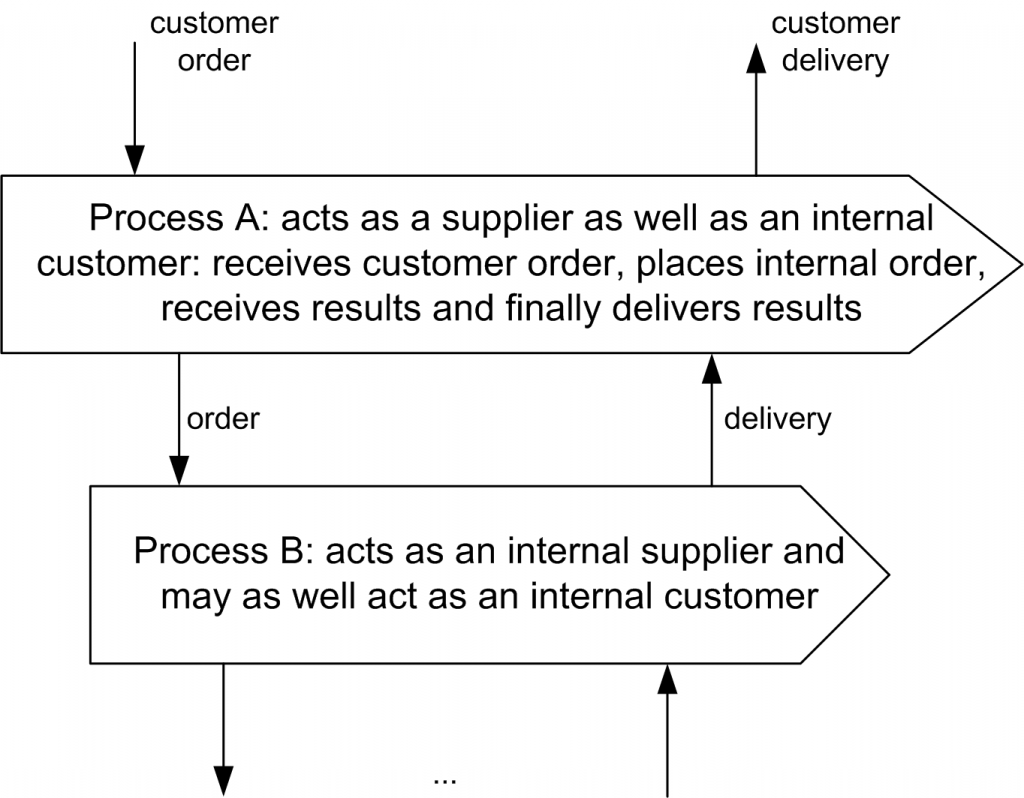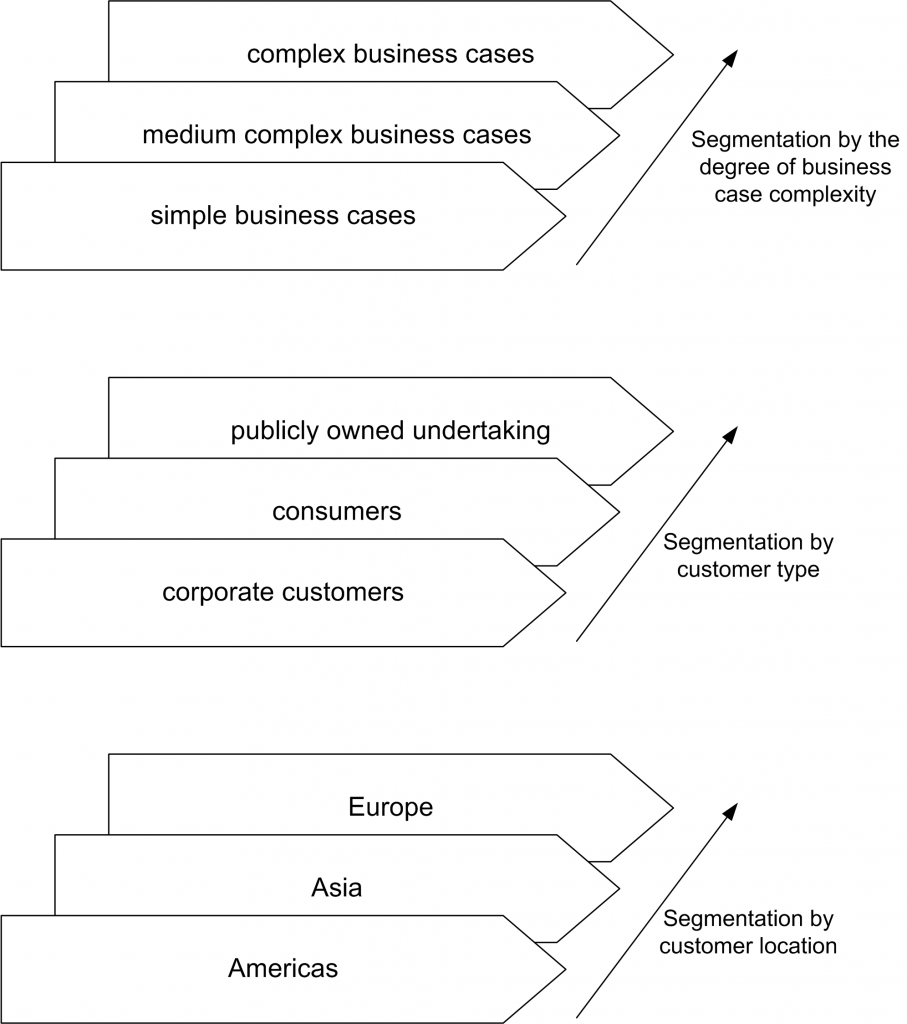The idea of process cascades (representing internal customer-supplier relationships between business processes of an organization) was originally developed by Tipotsch (1997), Schantin (2004), and Suter (2004). The idea is illustrated in the figure below. Process A, acting as an internal customer, places an order to Process B, acting as an internal supplier. After receiving the order, Process B deals with the order and delivers the result back to Process A. Cascading of business processes is an recursive approach, i.e. process B may itself place an order to another process, and so on.

The idea of cascading business processes
The idea of business process segmentation was also originally developed by Tipotsch (1997), Schantin (2004), and Suter (2004). Other authors refer to this idea as well. For instance, Osterloh and Wübker (1999) call it “Triage”, and Gaitanides (2007) calls it “process variant”. The idea is illustrated in the figure below.

Segmentation of business processes
Segmentation of a business process refers to the idea of creating process variants of a business process which faces heterogeneous market and/or customer requirements. The objective is that every process variant created can then handle homogeneous requirements. Some possible examples of business process segmentation are depicted in the figure below (segmentation by degree of business case complexity, customer type and customer location).

Business process segmentation examples